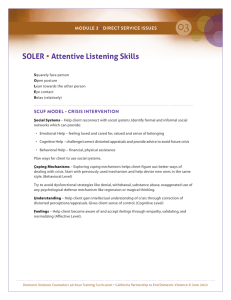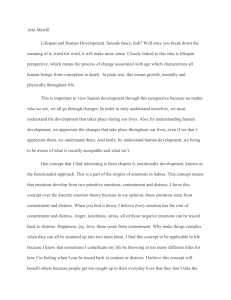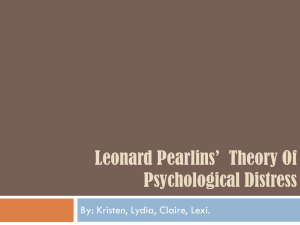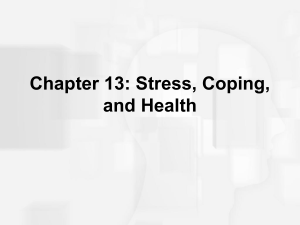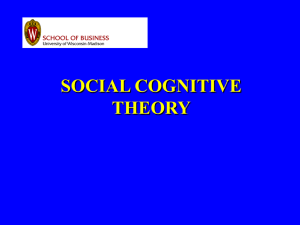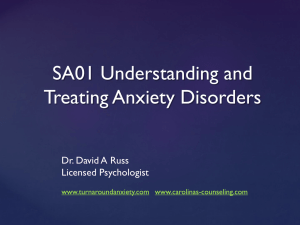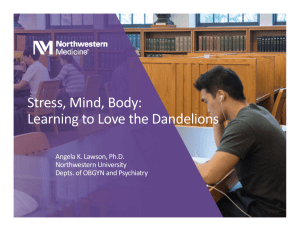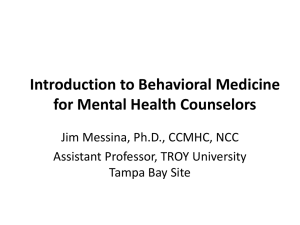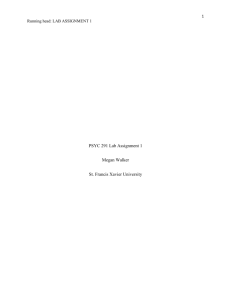Pain
advertisement
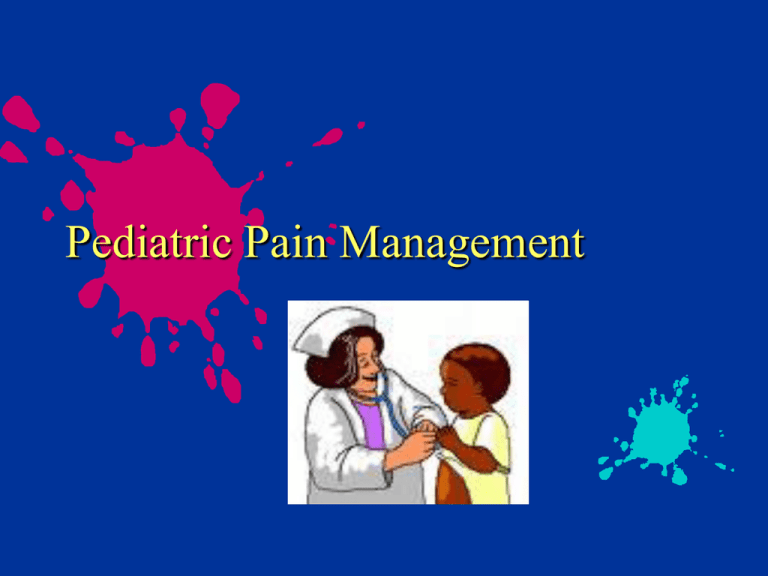
Pediatric Pain Management Pain • Definition: Physiological response transmitted through the nervous system that notifies your body that something is wrong • Acute • Chronic • Gate control theory: pain is a complex phenomenon that includes both physiological and psychological input • *emotional factors (e.g., anxiety) can increase pain perception in children Distress • Definition: an increase in the amount of pain “experienced” by the patient often caused by psychological factors • The emotional experience of pain • Variables that influence distress • • • • Age Prior experience Parent anxiety/response Coping skills • Approach (try to deal) vs. avoidance (hide, run, pull away) Biobehavioral Model Precipitants Disease Injury Stress Procedures Pain Perception Behavior Intervening Variables Biological Predisposition Family Environment Cognitive Appraisal Coping Strategies Perceived Social Support Functional Status Activities of Daily Living School Attendance Depressive Symptoms Anxious Symptoms Behavioral Problems Interpersonal Relations Categories of Pediatric Pain • Associated with chronic illness • Sickle cell, arthritis • Associated with physical injury/trauma • Burns, broken bones • Not associated with illness or injury • Headache • Associated with medical/dental procedures • Injections, surgeries Common Referral Issues • If the treating team believes the procedure to be highly painful or distressing • If the treating team has concerns about the child ability to cope with the procedure • If the child has experienced more than expected pain and distress during previous procedures Pain Assessment • Self Report • Visual Analog Scale • Faces Pain Scale • *pain is personal and subjective • Other report • Parent • Staff • *advantage of comparisons Pain Assessment • Behavioral Observation • Child-Adult Medical Procedure Interaction Scale (CAMPIS) • Adult vocalizations: Praise, Commands, Criticism • Child vocalizations: Cry, Information Seeking • Behavioral Approach-Avoidance and Distress Scale (BAADS) • Physiological • Heart rate • Blood pressure • Breathing rate Pain Assessment • Reading: Blount et al (2006) • Child distress most often preceded by adults’ reassuring comments, apologies, empathy, criticism of child • Child distress inversely correlated with adults’ coaching of the children to cope and child coping behaviors (I..e, distraction, breathing, making coping statements) Cognitive Behavioral Management of Chronic Pain • Framework: Gate control theory and biobehavioral model • 1. Pain Perception Regulation • Progressive Muscle Relaxation • Deep Breathing • Guided Imagery Cognitive Behavioral Management of Chronic Pain • 2. Pain Behavior Modification • Encourage adaptive behaviors – HOW? • • • • Pain behaviors: crying, resting Coping Relaxation Distraction • Discourage maladaptive behaviors – HOW? • Pain behaviors: secondary gain • Helplessness Cognitive Behavioral Management of Chronic Pain • 3.Intervening variables • Family environment and Social Support • Establish support systems • Encourage parent to empower child • Coping skills • Filmed modeling • Coaching • Incentives • Cognitive appraisals • Blame: “I deserve this.” • Anticipated pain: “This is going to hurt REALLY bad – I can’t do it!” • CBT has been found to be more cost-effective than medications • Although medications do also help Conclusions • Children can accurately report their pain • Pharmacological and psychological treatments often are both necessary • Cognitive-behavioral therapy can increase children’s coping and decrease their distress • Adequate pain control is a measure of the quality of treatment
